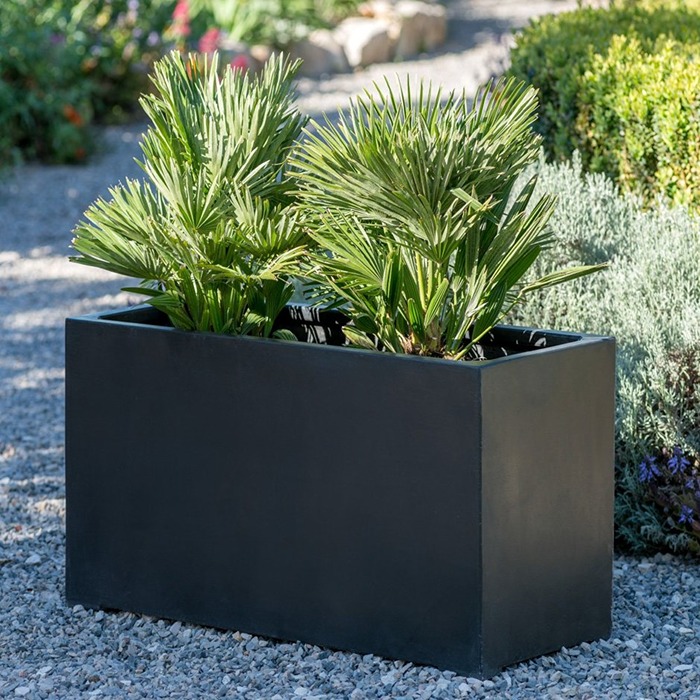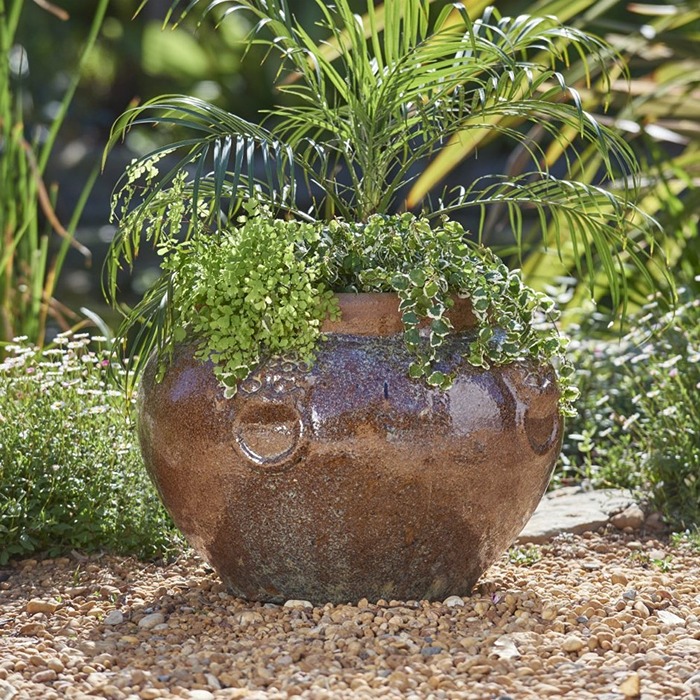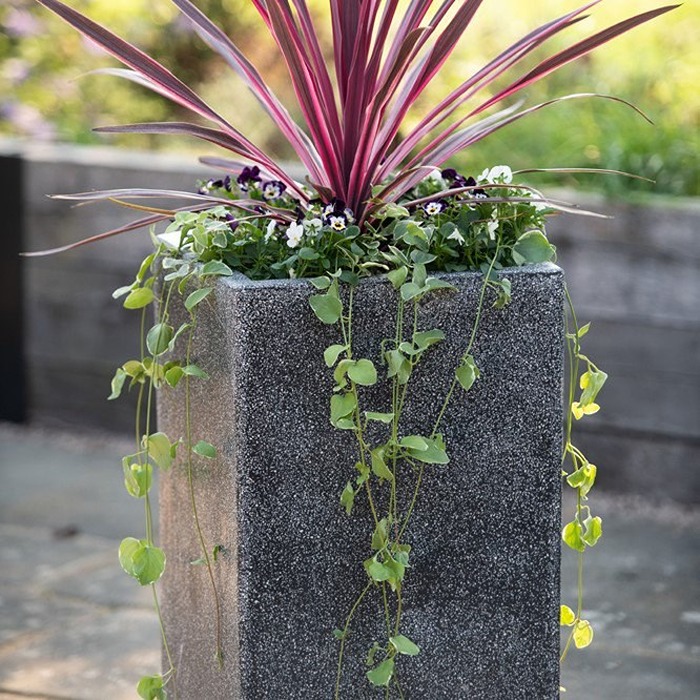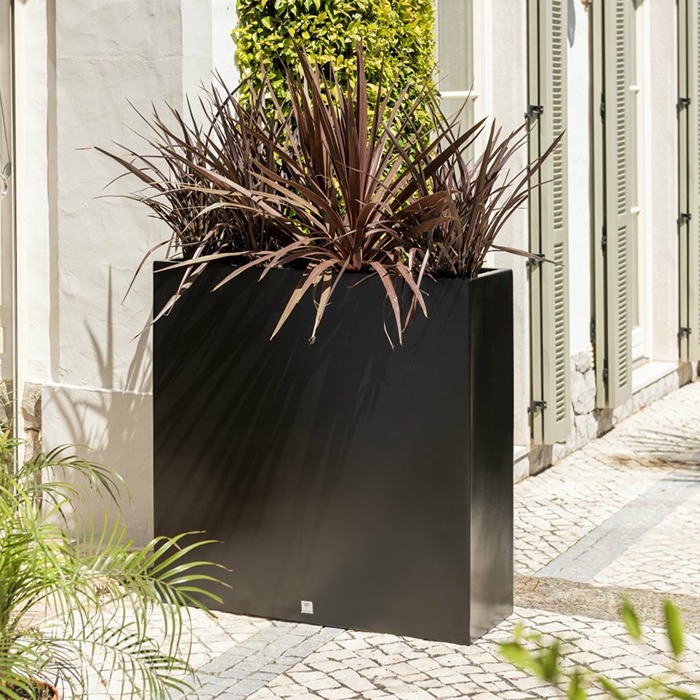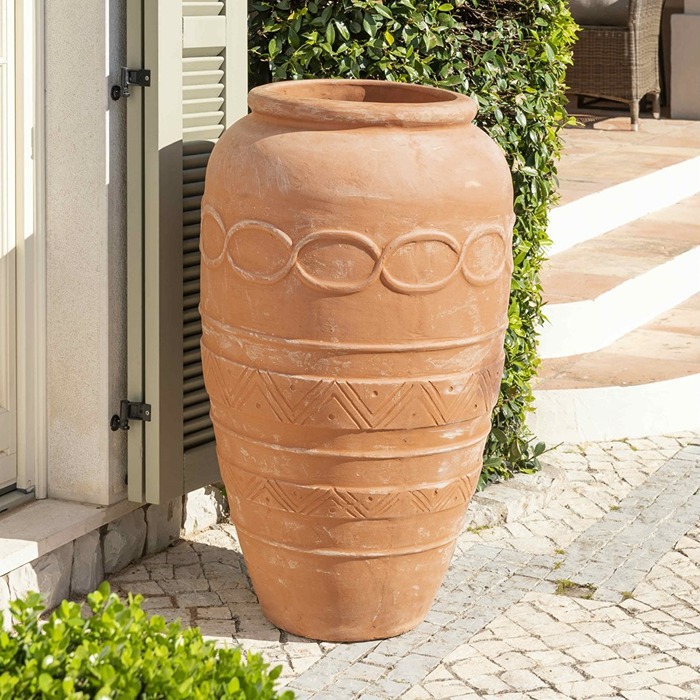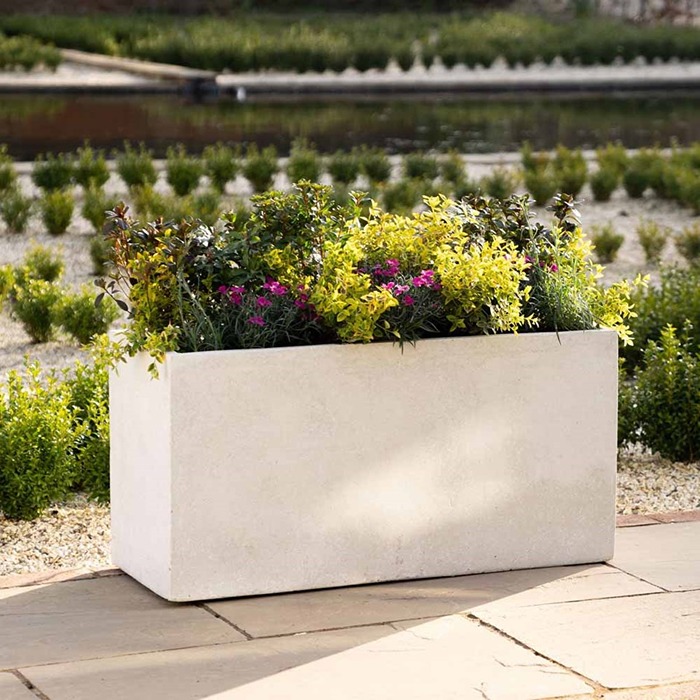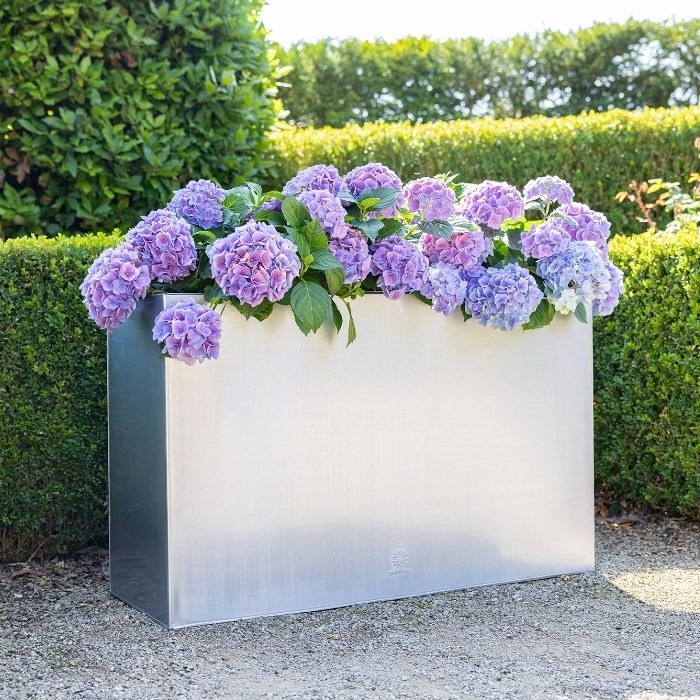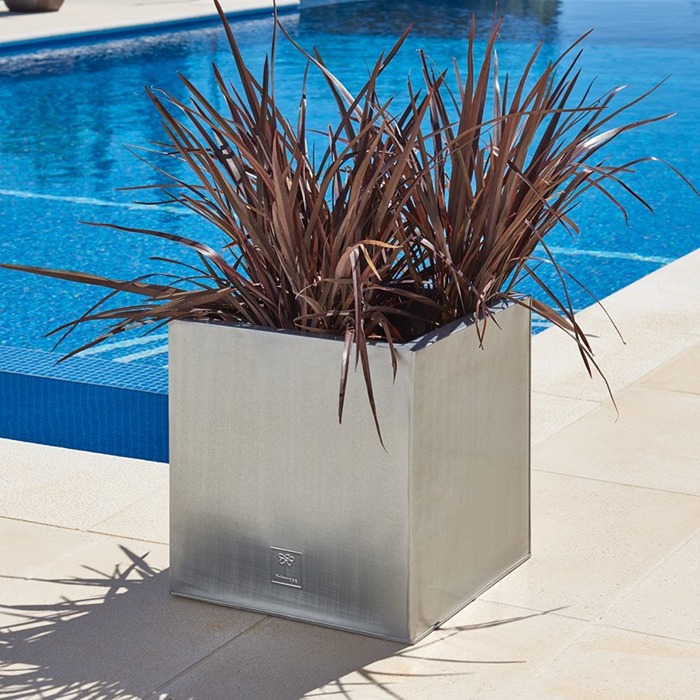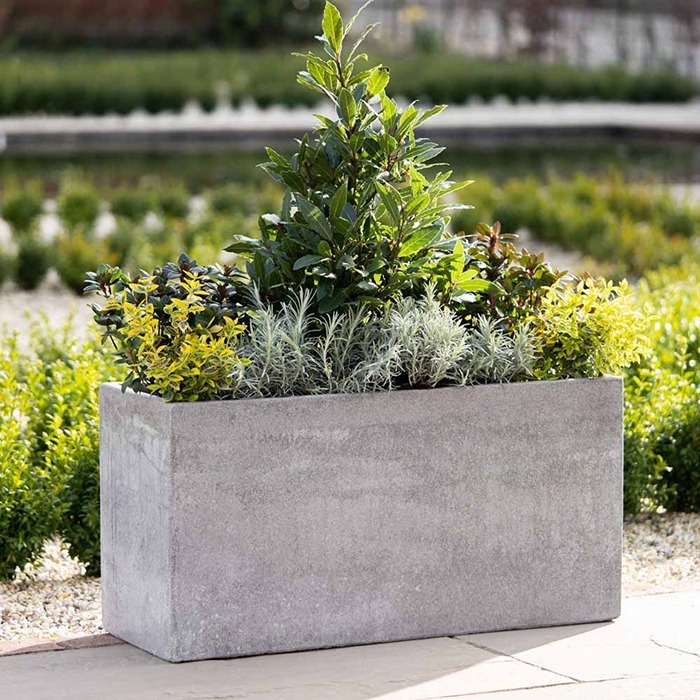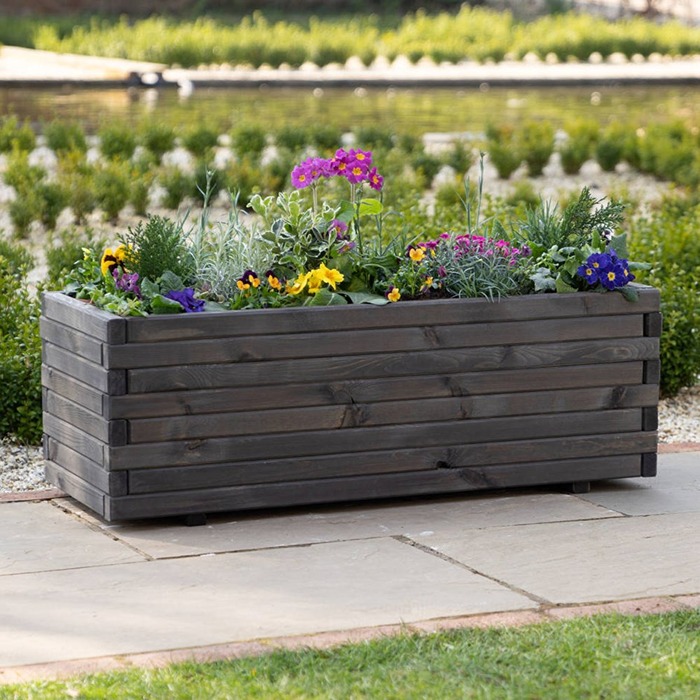With so many fantastic new materials on the market today, container planters are come in a huge range of colours and designs. Most of these materials are frost resistant, strong and durable. Learn about modern materials such as fibreglass, fibrecotta and polystone. These materials to look incredibly similar to terracotta, stone and lead but without the disadvantages.
Quick Links: Polystone | Galvanised Zinc | Ceramic | Terrazzo | Fibreglass | Terracotta | Fibrecotta |
Stainless Steel | Stone | Wood | Drainage
Polystone
Polystone planters are made from resin combined with powdered stone. Polystone is lighter than solid stone and less likely to chip or fracture as there are no natural fault lines. Polystone planters are as durable and strong as stone planters but without the weight. Most designs resemble real stone planters so well, you would not be able to tell the difference by eye.
Ceramic
Ceramic planters are made from clay then fired in a high temperate kiln. Kiln firing helps to reduce porousness and vulnerability to the elements. The main benefits of ceramic planters include durability and being an ideal option for plant growth. Ceramic planters can usually be used both indoor and outdoors. This makes them a wonderful choice for both house plants and garden plants. Glazed ceramic pots are also ideal for tropical plants as they can hold in moisture. To prevent overwatering, drainage holes are usually already manufactured into the planters so you shouldn’t need to make your own.
Poly-Terrazzo
Terazzo planters are a composite material made of stone (or other hard material) chips coupled with a binding agent, Terrazzo planters are each unique thanks to their speckled micro-patterns. As tough as stone while more lightweight and with extra frost resistance, Terrazzo planters are perfect for something a little different in the garden.
Fibreglass
Fibreglass is a versatile strong material which produces planters more lightweight than similar products constructed of stone, clay or other traditional materials. The versatility of fibreglass means these planters come in a huge range of sizes, shapes, colours and textures.
‘Gel’ and ‘Matt’ refers to the surface texture of the finished product – Gel coated planters have an extra layer of very glossy finish, whereas Matt planters have a slightly rough, unreflective appearance like finely ground stone. To protect these planters from scratches, always move them about with a dolly or trolley.
Terracotta
Terracotta planters have become a staple ingredient of most gardens mainly because they are porous, which is good for healthy soil. However because of this, terracotta pots are often not reliably frost-resistant and can easily break as the water freezes and expands. Terracotta planters are usually more expensive because of the weight (which affects shipping costs) and construction processes. Modern alternatives such as fibrecotta look virtually the same but are frost hardy, durable, lightweight and more cost effective. Some of these materials are also breathable.
Fiberstone
Fiberstone or fibrecotta is a modern engineered material constructed from terracotta reinforced with fibreglass fibres, creating a product that has all the benefits of terracotta and the beautiful colouring, but is substantially stronger and more durable. These planters are a lot more frost resistant than terracotta and quite a bit lighter.
Galvanised Zinc
Galvanization is the process of applying a protective zinc coating to steel, in order to prevent rusting. Our zinc planters made from steel coated in a layer of zinc. Our zinc planters have a steel thickness of 0.69mm on planters up to 60cm, and a thickness of 0.80mm on planters exceeding this size. To protect the steel, they have been electroplated in zinc at a thickness of 120g/m². We advise using a thick, non-biodegradable plastic liner or bag to help protect your planter from these trace chemicals. Read more about our zinc planters in our Zinc Planters Comparison guide.
Stainless Steel
Like zinc galvanised planters, stainless steel planters are light and come in a wide variety of shapes and sizes and are mainly chosen for their price and look. They have either a brushed (smooth but non-reflective) or polished (mirrored) surface finish. The properties of stainless steel means they are rust resistant, frost proof and strong.
Stone
Stone planters are carved from a variety of materials from granite to sandstone. Chosen for their natural beauty, longevity, strength and weight. They are the heaviest planters and thus ideal for use in locations where other planters may get knocked over. You’ll see a lot of them in National Trust properties because they are relatively indestructible to the general public. Stone planters are also usually the most expensive type of planter because of the manufacturing processes involved and transportation. Stone planters last for many years and will weather naturally over time.
Wood
Wood is a traditional material used to produce planters mainly for looks. The variety of tones within the range of natural woods enhanced by varnishes, sealants and paints makes wood an ever popular choice. Relative to other natural materials they can be lighter, cheaper and easier to move around, however they don’t tend to last as long as harder materials like stone and fibreglass, and need protecting with paints regularly. Wooden planters can also be protected from the effects of watering and weather by non-biodegradable plastic liners. Being a flexible, fibrous material, wood will not become damaged by frost but they may rot.
Wood planters are available in a range of colours, discover our range of wooden planters today!
Growing trees and other plants
The most common use for containers are for decorative use on patios and indoors or literally to ‘contain’. Some prolific plants that can very quickly take over a garden. Garden Mint, Strawberries and Bamboo are common garden plants that grow extremely quickly and spread everywhere they can. However, planted in a container, you can enjoy these staple garden ingredients. All without having to dig up their offspring every year. Smaller planters with less soil volume will have more extreme temperature changes. Thy dry out quicker and won’t be adequate for some species of plants. For example, clematis require their roots to be protected over winter. Therefore a container of at least 40cm deep and 30cm wide will be required. However small planters are ideal for some succulents, alpine species and annual plants such as pansies.
The most common use for containers are for decorative use on patios and indoors or literally to ‘contain’. Some prolific plants that can very quickly take over a garden. Garden Mint, Strawberries and Bamboo are common garden plants that grow extremely quickly and spread everywhere they can. However, planted in a container, you can enjoy these staple garden ingredients. All without having to dig up their offspring every year.
Smaller planters with less soil volume will have more extreme temperature changes. Thy dry out quicker and won’t be adequate for some species of plants. For example, clematis require their roots to be protected over winter. Therefore a container of at least 40cm deep and 30cm wide will be required. However small planters are ideal for some succulents, alpine species and annual plants such as pansies.
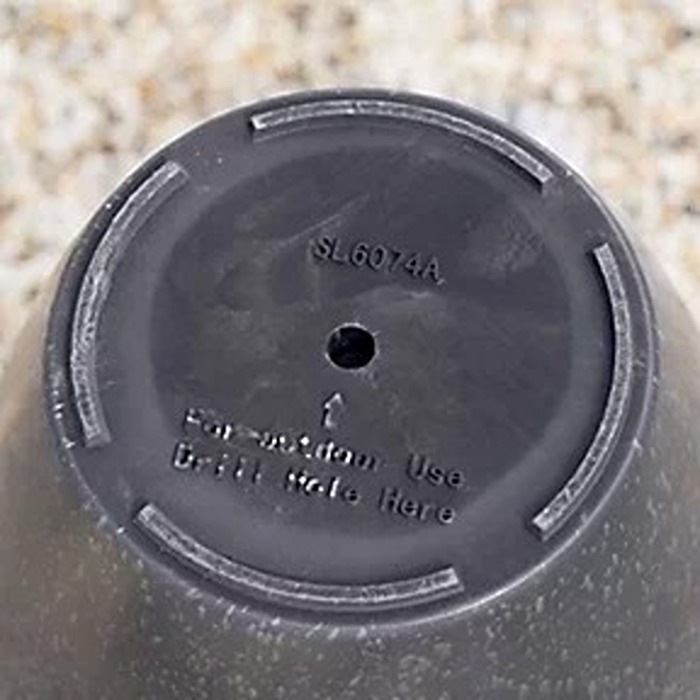
Drainage
The most common use for containers are for decorative use on patios and indoors or literally to ‘contain’ some prolific plants that can very quickly take over a garden. Garden Mint, Strawberries and Bamboo are common garden plants that grow extremely quickly and spread everywhere they can.
Smaller planters with less soil volume will have more extreme temperature changes and dry out quicker. However small planters are ideal for some succulents, alpine species and annual plants such as pansies.
